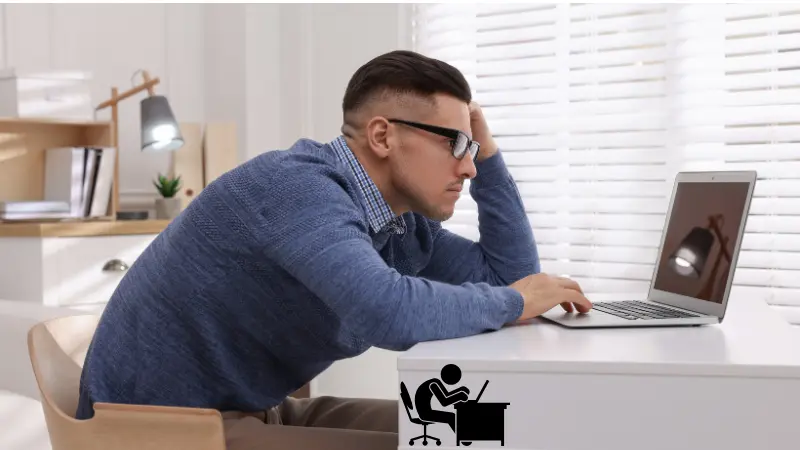Have you ever felt a nagging pain from hip to lower back pain that slowly creeps up or down? Or maybe it’s the other way around—your back aches, and before you know it, your hip starts to complain too. This frustrating spread of pain is more common than you think, and ignoring it can turn a minor discomfort into a chronic problem. So, what’s really going on here?
Let’s break it down and understand why from hip to lower back pain travels, and more importantly, how you can stop it in its tracks.
Table of Contents

Understanding the Connection Between Hip and Lower Back
The Anatomy of the Hip and Lower Back
Think of your hip and lower back as partners in a dance. The hip is a ball-and-socket joint designed for flexibility, while your lower back (lumbar spine) provides stability and support. These two areas are interconnected through muscles, ligaments, and nerves that coordinate your every movement—walking, sitting, bending, and even standing still.
How These Areas Work Together in Movement
During movement, the hip and lower back need to function together smoothly. If one becomes stiff, weak, or suffers an injury, the other area often takes on extra strain to make up for it.. This compensation often leads to overuse, strain, and eventually, from hip to lower back pain spreading from one region to another.
Common Causes of Pain Spreading From Hip to Lower Back
Sciatica: The Classic Culprit
Sciatica occurs when the sciatic nerve, which runs from hip to lower back pain pathways and down each leg, gets compressed or irritated. This results in sharp, shooting pain that travels from the back to the hip and even further down to the legs.
Hip Joint Arthritis and Referred Pain
Arthritis in the hip joint can create a chain reaction. The body shifts posture to avoid hip pain, which inadvertently puts more strain on the lower back, leading to secondary from hip to lower back pain.
Piriformis Syndrome – The Hidden Trigger
The piriformis is a small muscle deep in the buttock that can irritate the sciatic nerve if it becomes tight or inflamed. This causes hip pain that radiates to the lower back, often mimicking sciatica.
Sacroiliac Joint Dysfunction
The sacroiliac (SI) joint connects the spine to the pelvis. Dysfunction or inflammation here can lead to from hip to lower back pain, often making it hard to pinpoint the exact source.
Lumbar Disc Herniation (Slip Disc)
A slipped or herniated disc in the lumbar spine can press on nearby nerves, resulting in pain that begins in the lower back and spreads to the hip region.
Muscular Imbalances and Weak Core
Weak abdominal and gluteal muscles can cause muscular imbalances, forcing the lower back and hips to bear extra loads during movement. This is a major, often overlooked cause of from hip to lower back pain.
How Poor Posture and Daily Habits Contribute

Sitting for Long Hours – The Silent Enemy
Modern life has us glued to chairs for hours, whether it’s for work, driving, or binge-watching shows. Prolonged sitting tightens the hip flexors and weakens the core, leading to from hip to lower back pain that slowly worsens over time.
Bad Sleeping Positions and Their Impact
Sleeping on a too-soft mattress or in awkward positions twists the spine and hips unnaturally, putting stress on joints and muscles, resulting in persistent from hip to lower back pain.
Warning Signs You Shouldn’t Ignore
Numbness, Tingling, and Shooting Pain
These are red flags that nerves are being compressed. If you experience these sensations, especially if they radiate down one leg, consult a doctor immediately.
Reduced Range of Motion or Stiffness
Struggling to bend, twist, or even walk without discomfort? These mobility issues indicate underlying problems that need attention before they worsen.
Diagnosing the Root Cause
Physical Examination and History
A thorough physical examination helps doctors identify movement patterns, pain triggers, and muscular imbalances contributing to your from hip to lower back pain.
Imaging Tests – MRI, X-rays, and More
When necessary, imaging tests like MRIs or X-rays can reveal deeper issues like disc herniation, arthritis, or joint dysfunction.
Effective Treatment Options
Physiotherapy and Targeted Exercises
A physiotherapist can design specific exercises to strengthen weak muscles, improve flexibility, and correct posture. Consistent therapy often yields long-term relief from hip to lower back pain.
Medications for Pain Management
Over-the-counter pain relievers, anti-inflammatory drugs, and muscle relaxants can help control acute pain episodes effectively.
Injections and Advanced Pain Relief Methods
In cases of severe inflammation or nerve compression, corticosteroid injections or nerve blocks may provide significant pain relief from hip to lower back pain.
When Surgery Becomes Necessary
Surgery is considered a last resort but may be necessary for severe cases like advanced disc herniation or hip joint degeneration that hasn’t responded to other treatments.
Home Remedies to Ease the Pain
Stretching and Strengthening Routines
Daily stretches focusing on hip flexors, hamstrings, and lower back muscles can significantly reduce tension and improve mobility, addressing from hip to lower back pain.
Heat and Ice Therapy
Applying heat relaxes tight muscles, while ice reduces inflammation. Alternating between the two can provide immediate relief for acute pain episodes.
Preventing Pain from Returning
Ergonomics and Correct Posture
Setting up ergonomic workspaces and practicing mindful posture during daily activities can drastically reduce the recurrence of from hip to lower back pain.
Building a Spine-Safe Fitness Routine
Incorporate low-impact exercises like swimming, yoga, and Pilates into your routine to keep your spine and hips healthy and mobile.
Lifestyle Changes That Make a Difference
Weight Management and Diet
Maintaining a healthy weight reduces the load on your hip and back joints. An anti-inflammatory diet rich in fruits, vegetables, and lean proteins supports overall joint health.
Stress Reduction Techniques
Chronic stress leads to muscle tension, especially in the back and hips. Practices like meditation, deep breathing, or even a daily walk can work wonders.
Conclusion
From hip to lower back pain is more connected than you might think. What starts as a minor discomfort can quickly spiral into a widespread problem if left unchecked. But the good news? With the right understanding, proper diagnosis, and a proactive approach involving therapy, posture correction, and lifestyle tweaks, you can reclaim a pain-free life.
Stop ignoring the signs—your body is asking for help. Listen to it, act now, and get back to moving freely.
FAQs
Q1: Why does my hip pain get worse when I sit? Prolonged sitting tightens the hip flexor muscles and increases pressure on the sciatic nerve, leading to worsening from hip to lower back pain.
Q2: Can a pinched nerve in my hip affect my lower back? Yes, nerve compression in the hip region can alter your posture and movement, eventually stressing the lower back and causing from hip to lower back pain.
Q3: How long does it take to recover from sciatica? Recovery varies from person to person but typically ranges from a few weeks to a few months with proper therapy and exercises.
Q4: Are home exercises enough to fix hip and back pain? Mild cases can improve with home exercises, but persistent or severe from hip to lower back pain often requires professional physiotherapy and medical guidance.
Q5: When should I see a doctor for hip and lower back pain? If your from hip to lower back pain persists beyond a week, worsens with activity, or is accompanied by numbness or tingling, you should consult a doctor.
Q6: Can walking worsen hip to lower back pain? Walking is generally beneficial, but if your gait is altered due to an underlying issue like sciatica or arthritis, it can aggravate from hip to lower back pain. A physiotherapist can correct your walking mechanics.
Q7: How does weight gain influence hip and lower back pain? Excess body weight increases the load on your hips and lower back, which can amplify stress on joints and muscles, worsening from hip to lower back pain.
Q8: Is chiropractic care effective for hip and lower back pain? Chiropractic adjustments can provide relief for some people by improving joint mobility and reducing nerve pressure. However, it’s important to consult a professional for a proper diagnosis.
Q9: Can yoga help relieve from hip to lower back pain? Yes, yoga can improve flexibility, strengthen supporting muscles, and relieve tension, which helps in managing from hip to lower back pain effectively.
Q10: What are the best sleeping positions for hip and lower back pain relief? Sleeping on your side with a pillow between your knees or on your back with a pillow under your knees helps maintain spinal alignment and reduces from hip to lower back pain.
Q11: Can dehydration cause hip and lower back pain? Dehydration affects spinal discs and muscles, reducing their cushioning ability and leading to stiffness or cramps that contribute to from hip to lower back pain.
Q12: How long should I rest if I have hip and lower back pain? Short-term rest (1-2 days) is fine, but prolonged inactivity can worsen from hip to lower back pain. Gentle movement and guided exercises promote faster recovery.
Further Reading
- 5 Warning Signs Your Hip Pain Is Actually a Back Issue
- 10 Easy Lower Back Pain Exercises You Can Do at Home — Feel Relief Fast!
With 20+ years of clinical experience in spine, joint, and pain management, Dr. Vivek ensures every article reflects accurate, trustworthy, and up-to-date health advice.
Learn more about Dr. Vivek’s qualifications & journey →

Dr. Vivek Arora (BPT, MPT, FRCPT, MIAP) is a licensed physiotherapist with over 20 years of experience in spine and joint care. He specializes in evidence-based physiotherapy, patient education, and long-term recovery without surgery. Passionate about empowering patients through knowledge, Dr. Arora shares expert-backed health content for a global audience.
To know more about Dr. Vivek’s journey, click here.
